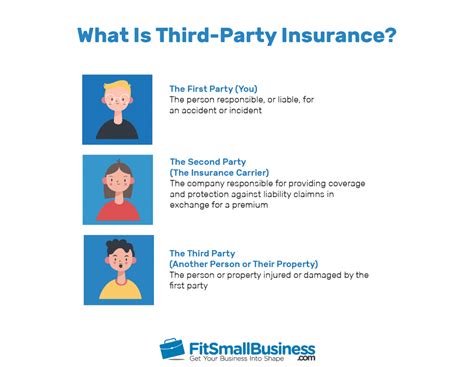Learn the benefits and risks of self-insurance, how it works, and how to choose between self-insurance and traditional insurance. Discover the basics of self-insurance today!
Understanding Self Insurance
Contents
Self insurance is a risk management strategy where a company or individual assumes the financial responsibility for potential future losses instead of paying a premium to an insurance company. In other words, instead of purchasing a traditional insurance policy, the individual or organization sets aside funds to cover potential losses.
One of the key benefits of self insurance is the potential for cost savings. By assuming the financial risk for potential losses, companies and individuals can avoid paying premiums to insurance companies, which can result in significant savings over time. Additionally, self-insured entities have the opportunity to tailor their coverage and risk management strategies to better suit their specific needs, rather than relying on standard insurance policies.
However, it’s important to note that self insurance also comes with significant risks. Individuals and organizations that choose to self-insure must have the financial resources to cover potential losses, as well as a thorough understanding of the potential risks they are assuming. Without proper risk management and financial planning, self insurance can leave individuals and organizations vulnerable to significant financial losses.
When considering self insurance, it’s important to carefully weigh the potential benefits and risks. Some factors to consider include the size of the entity, the financial resources available, and the level of risk tolerance. While self insurance can offer cost savings and greater flexibility, it also requires careful financial planning and risk management to be successful.
Benefits of Self Insurance
Self insurance offers a range of benefits to individuals and businesses, providing more control, flexibility, and cost savings compared to traditional insurance policies. One of the major benefits of self insurance is the ability to tailor coverage to fit specific needs, rather than being subject to the limitations of standardized insurance packages. This can result in more comprehensive coverage for certain risks, while allowing for the exclusion of unnecessary coverage.
Additionally, self insurance can also lead to significant cost savings over time. By retaining more of the financial risk, businesses and individuals can avoid paying premiums to insurance companies, ultimately reducing the overall cost of coverage. This financial flexibility allows for the allocation of funds towards other investments or operational expenses, providing greater financial security and stability.
Another key benefit of self insurance is the potential for improved claims management and risk control. With a self insurance program, the policyholder has the opportunity to develop and implement risk management strategies tailored to their specific needs. This can lead to a greater focus on accident prevention, reducing the frequency and severity of claims, ultimately leading to lower overall costs and improved profitability.
Furthermore, self insurance can offer greater transparency and accountability, as policyholders have direct access to claims data and can more effectively assess and monitor their risk exposure. This level of insight can be invaluable in informing future decision-making and risk mitigation efforts, allowing for more proactive and informed risk management practices.
In conclusion, the benefits of self insurance are manifold, offering greater control, flexibility, and cost savings compared to traditional insurance policies. By tailoring coverage to specific needs, reducing costs, improving risk management, and enhancing transparency and accountability, self insurance can provide valuable advantages for individuals and businesses alike.
How Self Insurance Works
Self insurance is a risk management strategy in which an individual or a company sets aside funds to cover potential losses instead of purchasing insurance through a traditional insurer. The process of self-insurance involves taking on the financial risk of potential future losses and creating a fund to cover those losses. This fund is typically funded through regular contributions and can be used to pay for any losses that occur.
One way self insurance works is by establishing a self-insurance fund to cover potential losses. This fund is funded by setting aside a predetermined amount of money each month or year to cover any potential losses that may occur. This can be a more cost-effective way to manage risk, as it eliminates the need to pay premiums to a traditional insurer.
Another aspect of how self insurance works is through the use of loss control measures. In order to effectively self-insure, individuals or companies must implement measures to reduce the frequency and severity of potential losses. This can include implementing safety protocols, conducting regular maintenance, and minimizing risk factors to mitigate potential losses.
Self insurance also involves taking on a greater amount of financial risk. Since there is no traditional insurer to fall back on, individuals or companies must be prepared to cover the full cost of potential losses. As a result, the success of self insurance relies heavily on the ability to accurately assess and manage risk, as well as the financial stability to cover any potential losses that may occur.
In conclusion, self insurance works by creating a fund to cover potential losses, implementing loss control measures to mitigate risk, and taking on the financial risk of potential losses without relying on a traditional insurer. This strategy can offer cost savings and greater control over risk, but it also requires careful planning, financial stability, and risk management expertise.
Risks of Self Insurance
Self insurance, while offering several benefits, also comes with its own set of risks that individuals and businesses must consider before deciding to go this route.
One of the main risks of self insurance is the financial burden it can place on the individual or organization. In traditional insurance, the premiums paid provide a sense of security and protection against large unexpected expenses. However, with self insurance, there is no guarantee that the funds set aside will be enough to cover any potential losses. This can lead to serious financial strain if a major incident occurs.
Another risk of self insurance is the accounting burden and administrative costs associated with managing the self-insurance fund. Businesses must ensure that they have the necessary resources and expertise to handle the financial and administrative responsibilities that come with self-insuring. This can be a significant undertaking and may require hiring additional staff or outsourcing to third-party administrators.
Additionally, self insurance also poses a legal risk as individuals and businesses are solely responsible for handling claims and settlements. Without the backing of an insurance company, there is a greater risk of potential lawsuits and legal battles in the event of a dispute. This can lead to substantial legal expenses and a significant drain on resources.
Lastly, self insurance carries a reputational risk. In the event of an unforeseen circumstance, businesses that self-insure may struggle to maintain a positive public image if they are unable to cover the costs associated with the incident. This can result in a loss of trust and credibility among customers, employees, and stakeholders.
Choosing Self Insurance vs Traditional Insurance
When it comes to protecting your assets and minimizing risk, there are two main options: self insurance and traditional insurance. Self insurance involves setting aside funds to cover potential losses, while traditional insurance involves paying premiums to an insurance company to transfer risk. Both options have their own benefits and risks, so it’s important to carefully consider which is the best choice for your individual needs.
One of the main benefits of self insurance is the potential for cost savings. By setting aside funds and only paying for actual losses, individuals or businesses may be able to save money in the long run. Additionally, self insurance can provide more control over the claims process and the ability to tailor coverage to specific needs. On the other hand, traditional insurance offers the benefit of spreading risk across a larger pool of policyholders, which can provide more stable and predictable costs. Traditional insurance also often comes with the benefit of professional claims handling and expertise.
However, both self insurance and traditional insurance come with their own set of risks. With self insurance, there is the potential for large, unexpected losses that could be financially devastating. Traditional insurance, on the other hand, comes with the risk of increasing premiums or policy cancellations. It’s important to carefully assess your own risk tolerance and financial situation when weighing the options. Additionally, regulations and legal requirements may play a role in the decision-making process.
Ultimately, the choice between self insurance and traditional insurance will depend on a variety of factors, including your individual or business’s financial situation, risk tolerance, and specific coverage needs. It’s important to carefully weigh the benefits and risks of each option before making a decision. Consulting with an insurance professional or financial advisor can also provide valuable insight and assistance in making the right choice for your needs.












